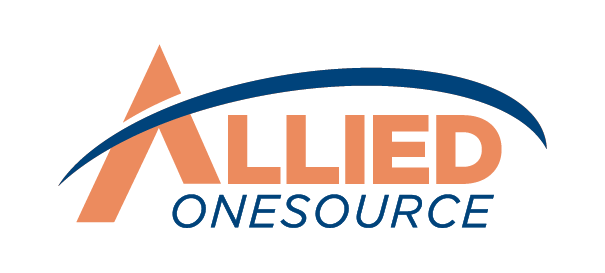RPO Insights Reveal 5 Crucial Lessons from This Year to Shape Future Talent Acquisition
Skilled candidates are scarce, and traditional hiring methods aren't cutting it anymore. As companies struggle with talent shortages and shifting workforce dynamics, many are turning to Recruitment Process Outsourcing (RPO). But how do you navigate this complex landscape?
Our RPO insights share three important lessons from this year that can help reshape your future hiring efforts. These lessons highlight many businesses' challenges and provide strategies for effectively finding and retaining candidates and employees, whether you're dealing with high-volume recruitment, specialized roles, or fluctuating hiring needs.
RPO Market Growth: Trends Shaping the Future of Talent Acquisition
As organizations seek to improve their talent acquisition strategies, some significant trends are shaping the future of RPO.
Read More: A Deep Dive into The Impact of Recruitment Process Outsourcing (RPO) on Talent Acquisition
Global RPO Market Growth
The global Recruitment Process Outsourcing (RPO) market was valued at $7.33 billion in 2022 and is projected to grow at 16.1 percent from 2023 to 2030.¹ This growth is mainly driven by the demand for more efficient recruitment processes and the desire to lower overhead costs. This shows more companies are realizing the value of smarter hiring strategies.
RPO Services: From Sourcing to Selecting
RPO providers do important work in hiring, such as finding, screening, and choosing candidates. They are increasingly using AI and machine learning to make this process easier and faster. Here are some ways they’re using technology:
- Scheduling interviews automatically
- Screening resumes
- Interacting with candidates through chatbots
The Role of AI
Artificial Intelligence (AI) is transforming recruitment by:
- Automating candidate sourcing
- Rediscovering past candidates
- Promoting diversity hiring
Rising Attrition Rates and RPO Solutions
Many industries are seeing higher turnover rates, increasing the need for RPO services. Many providers now offer fast replacements for candidates who leave early. At the same time, changing education systems are producing more skilled graduates, which makes it more challenging for companies to find the right candidates.
Automation and Skilled Workforce Challenges
As automation grows, companies are trying to keep or even increase their number of employees. A shortage of skilled workers is pushing businesses to outsource recruitment. Some companies also train their employees to improve their skills, while others invest in learning programs to bridge the gaps.
Impact of COVID-19 on Recruitment
The COVID-19 pandemic has changed recruitment practices by enforcing social distancing measures. With the need to limit face-to-face interactions, companies quickly switched to digital recruiting tools. Video interviews, online assessments, and virtual job fairs became the norm. The shift helped maintain hiring processes and also opened up new possibilities for reaching more candidates from different locations.
AI and ML in Candidate Assessment
AI and Machine Learning (ML) are becoming essential in recruitment, particularly through tools like:
- Chatbots for communication
- Gamification in assessments
RPO for Small, Medium, and Large Enterprises
Small and medium businesses are turning to RPO services more often to move away from traditional HR tasks and focus on smarter workforce planning. In contrast, large companies are looking for complete solutions to manage all their HR needs in one place.
Specialized RPO Services for Competitive Advantage
RPO vendors provide customized services that focus on:
- Geographic locations
- Industry sectors
- Job categories
They also offer different recruitment models, such as on-demand, project-based, or end-to-end services, based on client needs. Customizing these services helps them meet the specific requirements of different businesses.
RPO Insights to Guide Your Strategy Next Year
It's time to reflect on the lessons we've learned this year and how we can apply them in the coming year.
Let's explore what insights you can carry to improve your recruitment services.
Read More: The 2023 Ultimate Guide to Talent Acquisition
1. Choose the right RPO model.
In 2022, the enterprise-based segment dominated the market at 55.7 percent. Meanwhile, the on-demand segment is expected to grow the fastest, with a projected growth rate of 17.2 percent over the coming years.¹
What does this tell us? Different RPO models suit different needs. Large enterprises like Microsoft or IBM often choose enterprise-based RPO models for their ongoing, high-volume hiring needs. These full-service models handle everything from sourcing to onboarding, providing a steady stream of qualified candidates across various departments.
Meanwhile smaller companies typically prefer on-demand RPO providers. This model works well for short-term projects or seasonal peaks, allowing businesses to scale their hiring up or down without long-term commitments or high overhead costs.
Understanding these two RPO models helps you choose the best recruitment strategy based on your size, budget, and talent needs. Consider whether you need a comprehensive, ongoing RPO talent partnership or a flexible, project-based solution.
2. Off-site vs. on-site RPO.
When it comes to RPO, understanding the nuances of the off-site and on-site segments can impact your talent acquisition strategy.
Off-site RPO, representing 66.9 percent of the market revenue, offers advantages for companies with a global presence. It allows you to centralize your hiring efforts and makes finding candidates from different countries easier while understanding local laws and cultures.
Conversely, on-site RPO is projected to grow at 17.6 percent during the forecast period. This model integrates seamlessly with your in-house HR team, enhancing communication and transparency. It's particularly effective for companies needing quick responses to sudden hiring demands across various departments.
Understanding these two segments helps you identify the right strategy based on your hiring needs and internal HR capabilities. Both offer unique benefits that can be tailored to your specific hiring challenges.
3. Tailored recruitment strategies to meet your needs.
Whether you’re launching a new project or managing the day-to-day challenges of running your business, shaping your recruitment approach to match your needs is critical. For larger operations, this could mean implementing 360-degree interviews to assess both technical expertise and cultural fit or conducting recruitment audits to sharpen your hiring strategies and meet high-volume demands.
If you’re running a smaller business, flexibility is key. Balancing fluctuating hiring needs with payroll, employee relations, and other responsibilities can stretch your internal resources. Understanding these distinct challenges allows you to adopt smarter recruitment solutions that align with your unique goals and workforce needs.
Read More: 7 Key Benefits of Outsourcing Your Payroll
4. Seek help from a qualified RPO provider.
When it comes to streamlining your hiring process and getting the best talent, partnering with a Recruitment Process Outsourcing (RPO) provider can be helpful. With the right provider, you gain access to specialized recruitment expertise that can fill critical gaps in your hiring strategy, especially if you’re dealing with high-volume needs or hard-to-fill roles.
A qualified RPO provider goes beyond simply sourcing candidates. They bring industry insights, advanced analytics, and the latest recruitment technology to the table. This can help you optimize your talent pipeline, reduce hiring costs, and shorten the time-to-hire, all while ensuring you attract the right candidates for the job.
Whether you’re scaling up for a major project or looking for ways to ease the burden on your internal HR team, the right RPO partner can tailor their services to match your business goals.
5. RPO works best with proactive workforce strategies.
As hybrid and remote work models become more commonplace, so does the need for proactive workforce planning. Waiting until vacancies arise or projects hit critical mass forces you into rushed hiring decisions and missed opportunities.
Your planning needs to start long before roles open up. Think about the mix of remote and on-site talent you'll need six months from now. Consider when your busy seasons typically hit and what skills your teams will need to tackle upcoming projects. Sometimes, developing your current talent works better than external hiring—but you won't know unless you plan ahead.
DON’T LET TALENT SHORTAGES SLOW YOU DOWN—YOUR SUCCESS STARTS WITH THE RIGHT PEOPLE AND ALLIED ONESOURCE
Is your recruitment strategy in need of a refresh? At Allied OneSource, we provide customized solutions to meet the growing demands of your hiring process.
Every business relies on its HR teams to find the right people, but this can be challenging. With so many factors to think about, even top teams can use a little extra help. Allied OneSource’s RPO services can make your hiring process faster, boost the quality of candidates, ensure compliance, and help save on costs.
Let's talk today to learn more about our services!
Reference
1. “Global Recruitment Process Outsourcing Market | RPO Industry Report.” Grand View Research, www.grandviewresearch.com/industry-analysis/recruitment-process-outsourcing-rpo-market.










